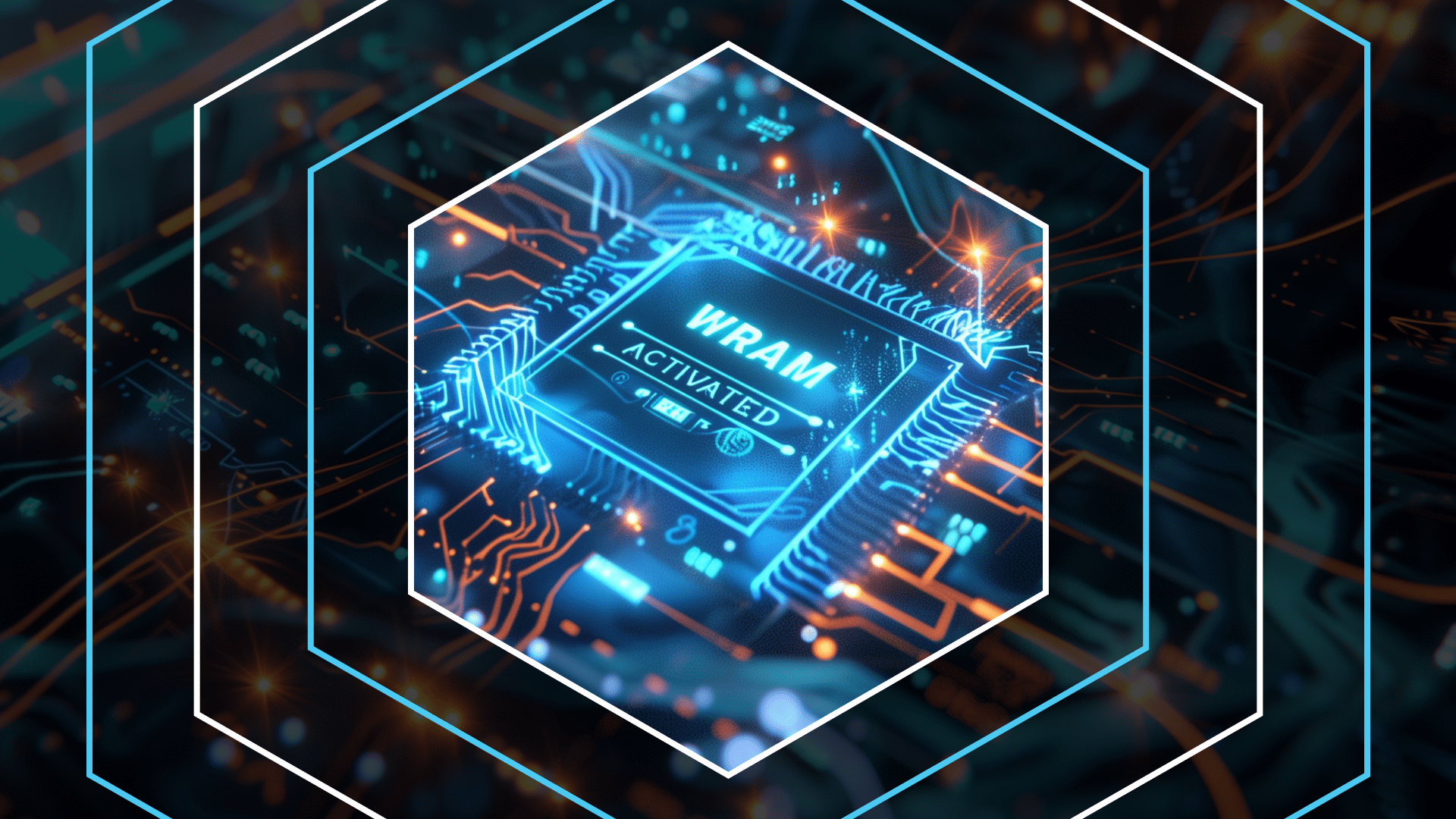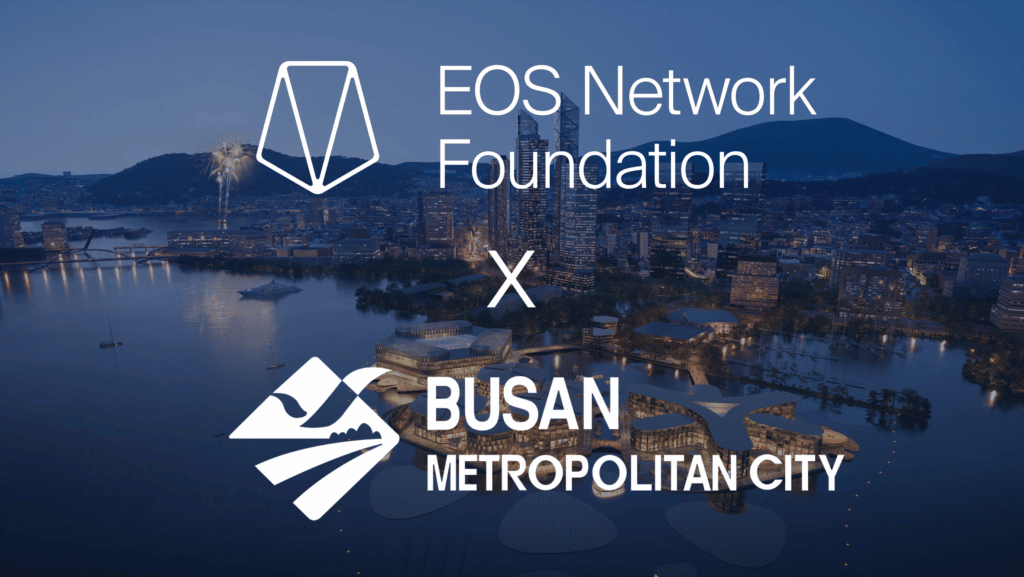Key Points:
- Groundbreaking Asset Class: WRAM establishes a new asset class on EOS, tokenizing the RAM real world asset (RWA) to make it freely tradable with extended reach beyond the EOS blockchain.
- Market Expansion: WRAM can be listed on external exchanges and third-party websites, enhancing its visibility and tradeability.
- Operational Flexibility: Unlike traditional RAM, which is confined to the EOS system, WRAM operates both on-chain and off-chain, facilitating broader usability.
The launch of EOS Wrapped RAM (WRAM) marks a significant advancement in enhancing the tradability of EOS RAM, a critical and often overlooked real-world asset (RWA) within the blockchain space. This initiative ushers in system-level tokenization of Random Access Memory (RAM), providing greater access, flexibility, and control to users across the EOS Network and beyond. The introduction of WRAM revolutionizes resource management and unlocks a range of new possibilities. It facilitates the trading of RAM resources on major exchanges, enables increased visibility into the EOS RAM market through platforms like CoinMarketCap and CoinGecko, and broadens the scope of blockchain resource management.
Discover EOS Wrapped RAM (WRAM)
RAM is a limited resource essential for operations on the EOS blockchain. As a physical resource, supply is constrained and limited to what the nodes on EOS’ distributed network provides to support activities such as running dApps, managing smart contracts, and executing transactions.
RAM vs. WRAM: RAM, as an EOS system resource, is relatively restricted. It can only be bought or sold directly through the system-level Bancor AMM, transferred to and from EOS accounts, or burned by EOS accounts. In contrast, WRAM, a tokenized version of the native system RAM, fulfills unmet needs by offering a broader set of capabilities. It provides 1:1 tokenization without any fees, can move off-chain, is tradable by exchanges, can be utilized by multiple wallets, and is eligible for listing on various third-party websites. This makes WRAM a more versatile and accessible option compared to traditional RAM.
For a deeper understanding of RAM’s role and mechanics on EOS, refer to “EOS RAM: The Hidden Gem of Blockchain Infrastructure“.
WRAM is similar to the well-known BRAM, the first wrapped RAM launched on EOS by DefiBox, but with the key distinctions listed below.
BRAM vs. WRAM: BRAM is tokenized RAM issued by Defibox that primarily operates within the Defibox ecosystem facilitating functions such as lending and swaps. WRAM is directly managed under the custody of EOS Block Producers using eosio.* i.e. system level, account permissions. This difference in custodianship secures the system and simplifies the process to get WRAM listed on top-tier centralized exchanges.
The ENF extends its gratitude to the DefiBox community for their exemplary leadership and vision. Their support in voting for WRAM liquidity pools on Defibox and updating their RAM UI to support WRAM has been important to advancing this initiative.
Market Cap Reflection: The introduction of WRAM mirrors the supply of native system RAM, enabling precise market cap calculations that more accurately reflect the true size and value of the RAM market. This transparency highlights WRAM’s role in showcasing the potential of EOS RAM within the blockchain space. At the time of writing, EOS RAM boasts a market cap of $108M.
Detailed WRAM Contract Specifications
- Chain: EOS Native
- Contract Account: eosio.wram
- Token Symbol: WRAM
- Precision: 0
- Token Name: EOS Wrapped RAM
- Max Supply: 418945440768 bytes (390 GB)
Overview of WRAM Functionalities and Structure
Key Functionalities of WRAM:
- Wrapping and unwrapping RAM: WRAM enhances utility and flexibility of RAM management by simplifying the conversion of system RAM bytes into WRAM tokens and vice versa.
- Wrap: Allows users to convert system RAM bytes into WRAM tokens, which are then credited to their accounts.
- Unwrap: Enables the conversion of WRAM tokens back into system RAM bytes, effectively retiring the WRAM tokens.
Fee Structure:
- Transactions using “buyram” and “buyrambytes”: These system level actions incur a nominal 0.5% fee to facilitate the issuance of WRAM tokens.
- “ramtransfer”: No fee is applied when used for issuing WRAM, promoting more efficient RAM management.
Visit the official ENF GitHub repository for detailed information on security measures, development tools, testing framework, and technical specifics of the WRAM smart contract.
System-Level Tokenization: Bringing Wrapped RAM (WRAM) to EOS
The tokenization of RAM through WRAM builds upon foundational changes brought about by the EOS system contract v3.3.0 upgrade, which refined the underlying mechanisms supporting RAM management and transfers. This strategic upgrade laid the groundwork for introducing WRAM, aligning with our goals of enhancing blockchain resource efficiency and accessibility.
For an in-depth overview of the EOS RAM transfer functionalities introduced in EOS System Contract v3.3.0, please read “EOS RAM Evolution: Unlocking New Capabilities”.
Implementing WRAM on EOS
The implementation of EOS Wrapped RAM (WRAM) involved a two-part multi-signature (MSIG) proposal to ensure the secure and structured integration of this new feature on the EOS Mainnet while allowing ample time for EOS Block Producer (BP) review and a code audit.
(1/2) MSIG Proposal: Creation of the eosio.wram Account
A supermajority of EOS BPs approved the proposal to create eosio.wram account on April 9th. This MSIG process established:
- Administrative foundation for WRAM
- Created eosio.wram account
- WRAM system design/management for operations and security.
Account Permissions:
- Owner Permission: Assigned to eosio@active, ensuring that the highest level of administrative control is maintained by a supermajority (15/21) of active EOS BPs.
- Active Permission: Configured to require joint authorization from the ENF and 8/15 active EOS BPs (eosio@prod.minor). This dual-permission structure ensures the security and integrity of the eosio.wram account through BP approval as well as the technical review of ENF engineers.
(2/2) MSIG Proposal: Deployment of the eosio.wram Contract and Creation of WRAM Token
Following the successful creation of the eosio.wram account, the second MSIG phase focused on deploying the eosio.wram contract and initiating the WRAM token. This contract was crucial for introducing a flexible mechanism for managing system RAM via a tokenization process and enhancing the EOS ecosystem’s capabilities. April 14th, 2024, the network approved the proposal to deploy the WRAM contract and activate WRAM token creation.
Key Deployment Actions:
- Set Code – Smart Contract Deployment: This action involves deploying the smart contract. The integrity of the contract file is ensured through SHA256 checksum validation, allowing the file to be authenticated by reproducing the build using CDT 4.0.1.
- WRAM Token Creation: The total supply of WRAM tokens cannot exceed 390GB.
- Token Issuance Authority: The eosio.wram account is designated as the sole authority responsible for issuing & retiring WRAM tokens.
- Safety Measures – Egress List: To prevent accidental loss of funds, measures are in place to prevent sending tokens to specific addresses, such as eosio.ram and eosio.wrap.
BlockSec Security Audit:
A fundamental aspect of the WRAM rollout was the comprehensive security audit conducted by BlockSec. This audit scrutinized every facet of the WRAM contract to confirm its security and operational soundness, ensuring no vulnerabilities were present.
- Audit Details: The full audit report by BlockSec, conducted on April 12, 2024, is available for community review, underscoring our commitment to transparency and trust in the WRAM system.
Embracing the Future with Wrapped RAM (WRAM)
The launch of WRAM represents a significant step forward for the EOS ecosystem in resource management. By tokenizing system RAM, WRAM enhances liquidity and accessibility, broadening its utility within the blockchain landscape. This advancement not only simplifies RAM trading on major exchanges but also boosts market visibility through platforms like CoinMarketCap and CoinGecko.
WRAM offers a tokenized version of EOS RAM, extending its reach across the blockchain sector and creating new opportunities for growth. Once WRAM is bridged to platforms like Ethereum (ETH) and Binance Smart Chain (BSC), it will pave the way for listing WRAM trading pairs on major decentralized exchanges such as Uniswap V3 and PancakeSwap V3. This strategic expansion will significantly enhance the accessibility and liquidity of WRAM, broadening its utility and appeal in the global crypto market.
The eosio.wram contract provides a robust and adaptable platform for managing RAM, poised to enhance the efficiency and capabilities of the EOS Network. As we look forward to the future, WRAM is set to open new markets and use-cases through the EOS blockchain and beyond.
We invite the community to join us in this exciting phase, to engage with WRAM, and help shape the future of resource management on EOS. For more information on the functionalities of WRAM, how to get involved, and to participate in the discussions, please visit our official communication channels and community forums.
Additional Resources
- WRAM Documentation
- RAM Tools
- RAM DeFi
- RAM Information
- Previous Articles on EOS RAM
- EOS System Contract Information
Disclaimer: None of the information provided in this article constitutes financial advice. Engaging with DeFi carries inherent risks, and individuals should conduct thorough research and exercise caution when engaging with DeFi projects.
EOS Network
The EOS Network is a 3rd generation blockchain platform powered by the EOS VM, a low-latency, highly performant, and extensible WebAssembly engine for deterministic execution of near feeless transactions; purpose-built for enabling optimal Web3 user and developer experiences. EOS is the flagship blockchain and financial center of the Antelope framework, serving as the driving force behind multi-chain collaboration and public goods funding for tools and infrastructure through the EOS Network Foundation (ENF).
EOS EVM
The EOS EVM is an emulation of the Ethereum EVM, housed within an EOS smart contract. It offers feature parity to other EVMs in the space but with unmatched speed, performance and compatibility. EOS EVM connects the EOS ecosystem to the Ethereum ecosystem by allowing developers to deploy a wide array of Solidity-based digital assets and innovative dApps on EOS. Developers can use EOS EVM to take advantage of Ethereum’s battle-tested open source code, tooling, libraries and SDKs, while leveraging the superior performance of EOS.
EOS Network Foundation
The EOS Network Foundation (ENF) was forged through a vision for a prosperous and decentralized future. Through our key stakeholder engagement, community programs, ecosystem funding, and support of an open technology ecosystem, the ENF is transforming Web3. Founded in 2021, the ENF is the hub for EOS Network, a leading open source platform with a suite of stable frameworks, tools, and libraries for blockchain deployments. Together, we are bringing innovations that our community builds and are committed to a stronger future for all.



